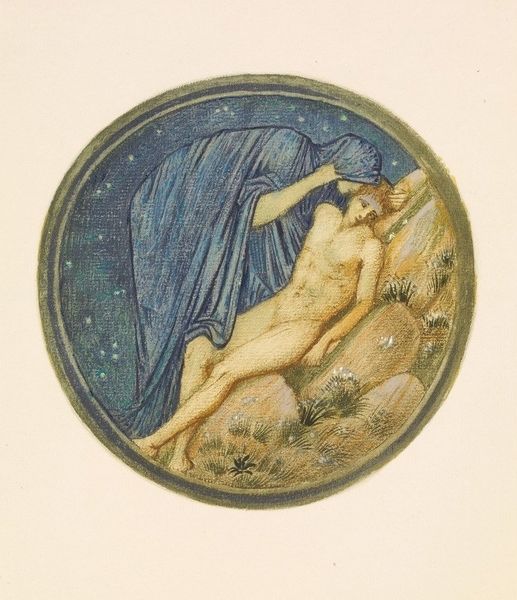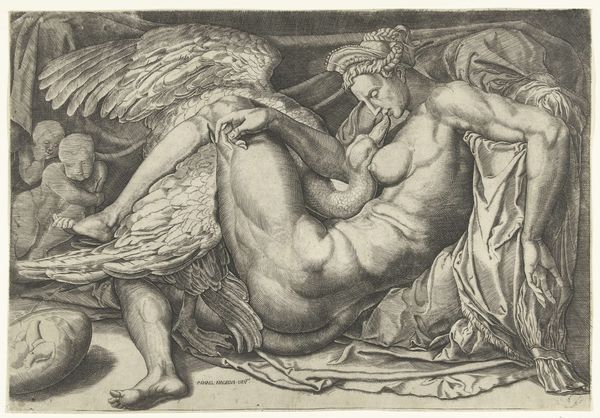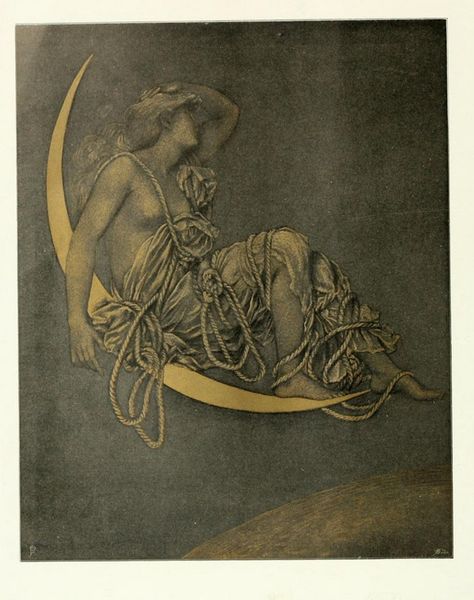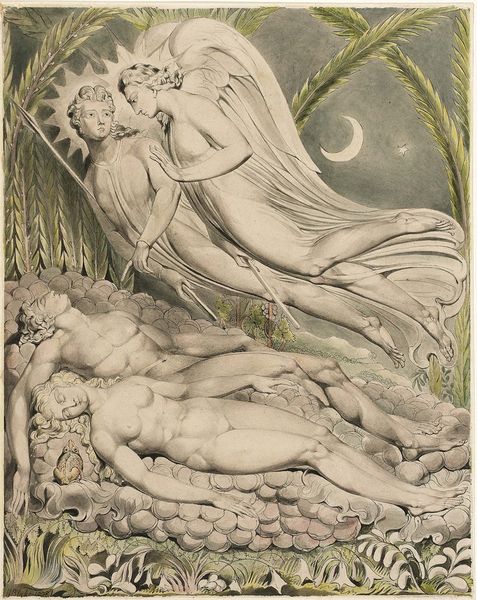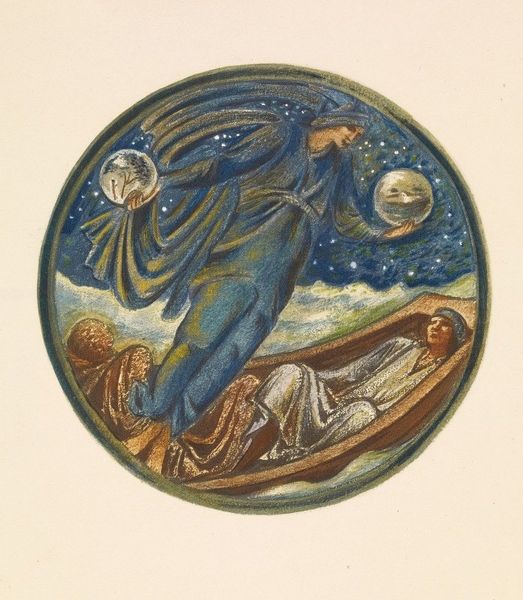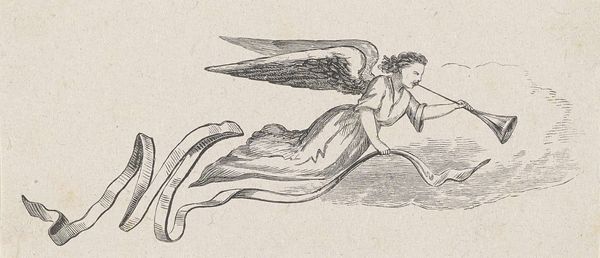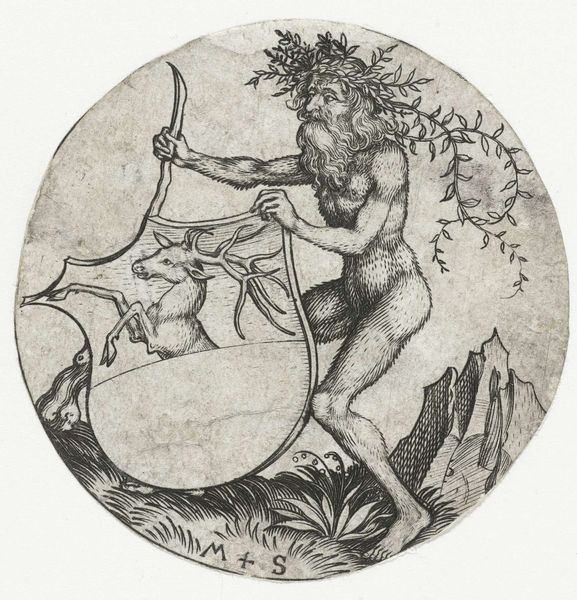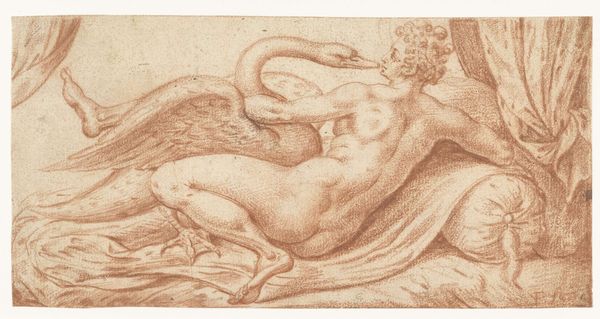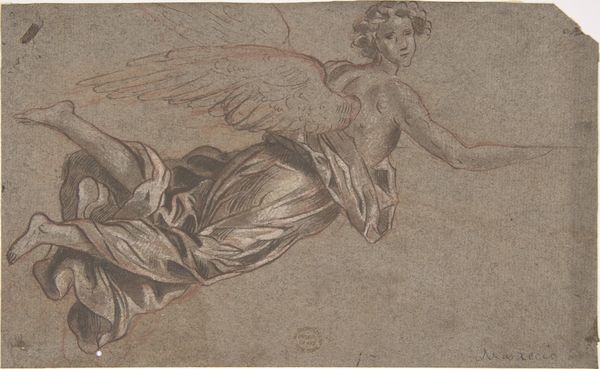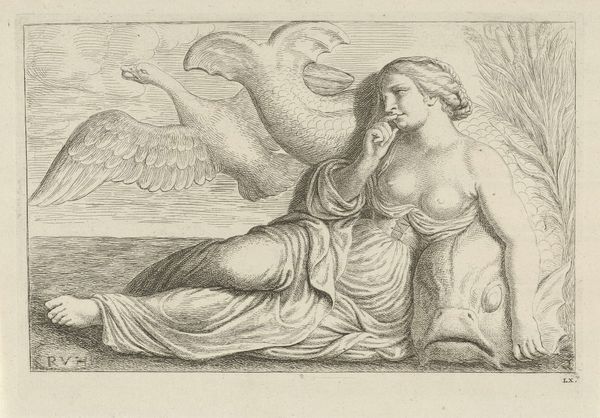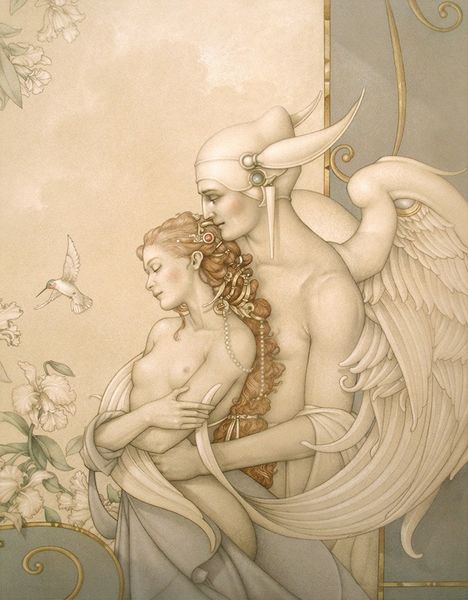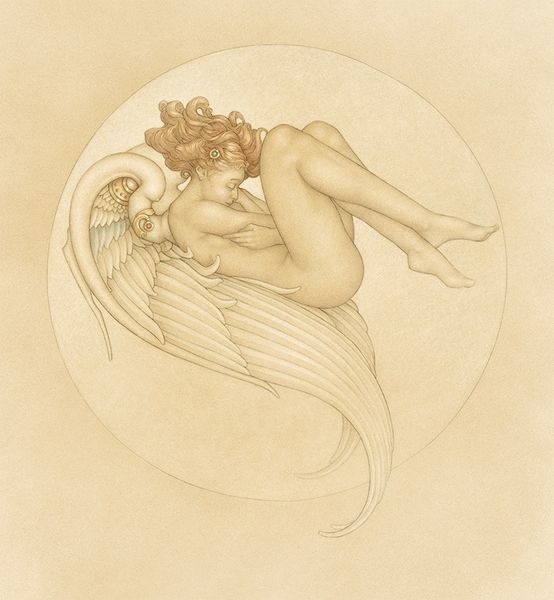
drawing, charcoal
#
drawing
#
landscape
#
charcoal drawing
#
symbolism
#
charcoal
#
nude
Copyright: Public Domain: Artvee
Editor: So this is "Study for ‘The Eclipse of the Sun by the Moon’" from 1892, by Elihu Vedder, made with charcoal. It has this really ethereal quality...almost ghostly because of the limited palette. How do you interpret this work? Curator: What strikes me immediately is the visible labor involved in its production. Notice the density of the charcoal strokes, and how they build up form and shadow. Consider the artist's physical effort – the repetitive, almost meditative act of layering charcoal to create this image. Editor: Right, it's not a quick sketch. What about the book and the figure, though? Are they supposed to be symbolic of something larger? Curator: The Symbolist movement often utilized allegorical figures, yes. But I am drawn to the materiality of the work. The charcoal itself transforms base material into an ethereal being writing in a book. Is Vedder commenting on the labor involved in constructing meaning and knowledge itself? Is this a proto-feminist commentary by the male artist? The artist himself might be the moon, or some equivalent metaphor about labour? Editor: So you're suggesting the work might be more about the act of creation itself than just some pre-determined symbolic message? Curator: Precisely. How does Vedder use charcoal, a common material, to transcend the limitations of its earthly origin and convey celestial themes? He is imbuing materiality with symbolic meaning by way of repetitive labor. Editor: That gives me a whole new perspective. I was focused on deciphering the symbolism but seeing the charcoal as the primary point…it changes everything! Curator: Think about what kind of hand it took to put down these strokes, to make all those little choices in the arrangement of forms, and the building of layers of meaning through labour. Editor: Thanks! Now I’ll see it in terms of materiality and social history, not just art history.
Comments
No comments
Be the first to comment and join the conversation on the ultimate creative platform.
